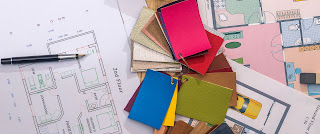When it comes to retail or supermarket inventory management there are some challenges that might seem tougher than looking after grocery retail supply chains. Optimizing a wide-ranging inventory including fresh & short shelf-life products can be a tricky task. Ideal supermarket equipment coupled with experienced space planners can have a positive impact on profitability.
While planning your store’s layout or redesigning one, a store owner must conduct thorough research, employ supreme quality supermarket equipment and approach the top space planners for their esteemed services. Better & fast replenishment of perishable items is indicative of the fact that your displays look neat & clean, customers receive fresher items, and ultimately you sell more. So, let’s have a closer look at the effectiveness of grocery store inventory management in making the best use of items’ shelf-life information & behavioral category of consumer to reduce retail food waste.1. Employ a Dynamic Approach for Fresh & Ambient Products
From wholesalers of fresh goods to grocery retailers, from price-driven to high-end supermarkets, cash-and-carry chains to convenience stores, it is observed that replenishment teams draw a thin line between the cost of spoilage and shelf presentation. Such a relationship makes it more necessary to get the balance right.
Grocers explore a supply chain that offers both fresh and ambient products with similar capacity constraints and resourcing costs whilst managing their other characteristics such as code life and shelf space. For instance, fresh goods require a more just-in-time, carefully mapped out replenishment model, whereas ambient goods are observed to be more cost-driven and space aware. However, both these goods must remain agile otherwise changes in demand can result in lost sales.
2. Shelf-Life Must be Considered While Ordering
Almost every retailer has contacts with space planners or suppliers that notify them about the varying minimum shelf-life of different supermarket equipment. However, this element of shelf-life is often overlooked in replenishment, as ‘sell-by’ dates vary from one delivery to another. These variables can be evolved into forecasts.
Retailers seek a model that can predict or estimate the two chief cost components involved in the grocery retail business i.e. spoilage and lost sales, covering all possible real-life scenarios. Keeping these two cost components, a cost function can be formulated that can lay out the overall cost of ordering. By careful scrutiny of the trade-offs, an astute system is able to balance the costs between spoilage and lost sales in a number of situations.
3. Inclusion of Forecasted Spoilage Can Assist
You can employ spoilage forecasts in order parameter calculation, however, ideal systems can also employ them in the calculations of replenishment by taking future spoilage into account. DC environments usually introduce batch-level inventory balances along with ‘sell-by’ date information. This data is useful in keeping availability high by replenishing before spoilage and highlighting goods that need to be sold quickly.
When it comes to retail environments it can be a little tricker because customers do not always function as a ‘first-in-first-out’ principle. It is quite the opposite in many cases. Fortunately, modern replenishment tools & techniques can estimate this shopping behavior of the customers & generate some rough numbers for balancing the batches.
4. Treat Each Item Individually While Understanding Products’ Behavioral Groups
Several perishable categories often contain products that can be substituted so easily for one another that customers can switch without thinking twice. Fresh bread, for instance, can be easily switched for the customers.
Replenishment is conducted on the probability that ‘nice-to-have’ items could run out by the end of the day, however, there should be sufficient stock in all basic categories. The optimization not only impacted food waste expectedly but also boosted category sales & sales margins. Due to an improved inventory turnover, the customers found fresher products simply more appealing.


Comments
Post a Comment